Warning!
Reading this manual may help you understand how and when to apologize to your clients and can assist with disclosures of harm or near misses.
**This guide does not include critical decision-making, please use the Code of Ethical Conduct, and conversations with colleagues or the Practice Advisor to assist you with decision-making.
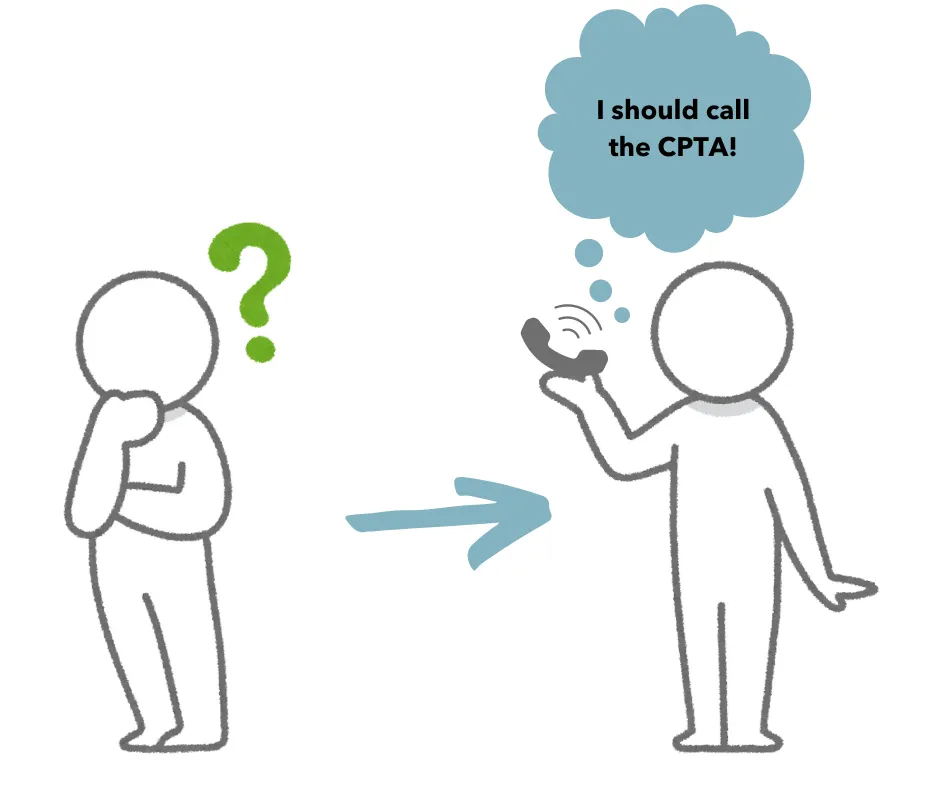
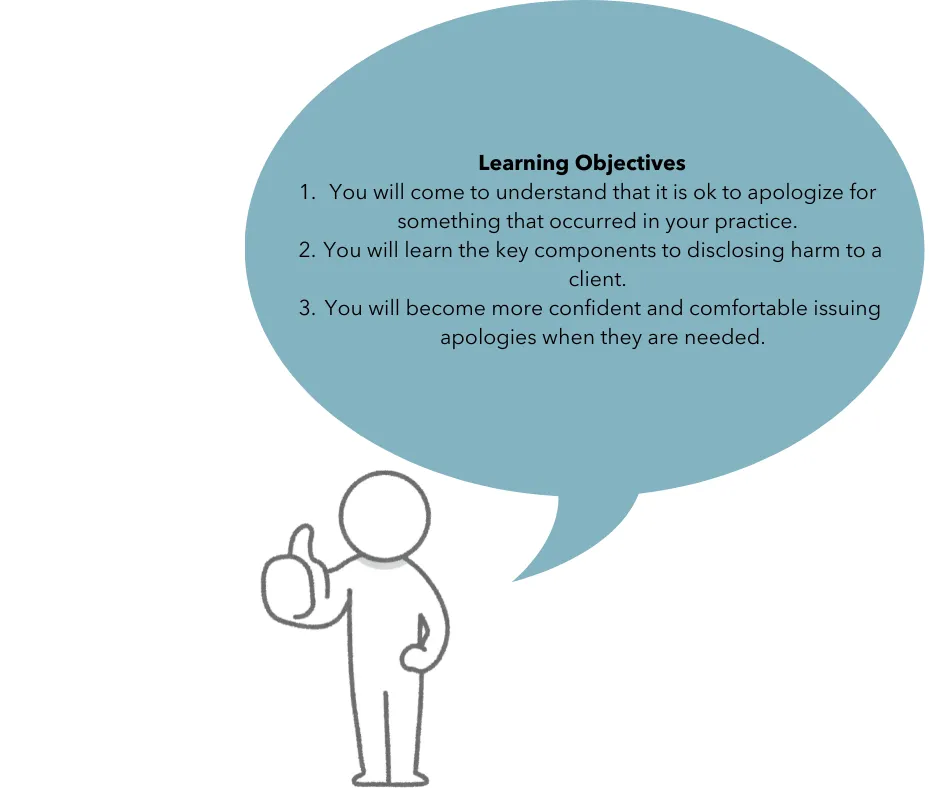
Before Getting Started:
• Apologizing to your client when needed is part of building positive therapeutic relationships
• In November 2008, the Alberta legislature passed an amendment to the existing Alberta Evidence Act, R.S.A. 2000, c. A-18 (the “Act”), to protect apologizing parties from risks of legal liability and loss of insurance coverage if they said “sorry”. (1)
• Section 26.1 of the Act states that “An ‘Apology’ means an expression of sympathy or regret, a statement that one is sorry or any other words or actions indicating contrition or commiseration, whether or not the words or actions admit or imply an admission of fault in connection with the matter to which the words or actions relate.” (2)
• The Act provides that “an apology does not constitute an express or implied admission of fault or liability.”(2) What this means is that you can say sorry without the apology being used against you in a civil court case as an admission that you were at fault.(1)
• This how-to manual will discuss everything from simple apologies like being late for an appointment to larger disclosures of harm.
• Apologies, when required, are an important piece in helping the client and their family cope with the effects of a harmful event or near miss. It also will help the physiotherapist in their recovery from an incident which involved them. (2,3,4)
• Don’t forget about the resources at the end of the manual!
Step 1: Identify the Issue
- Something Small: Often it is readily apparent when something happens that requires an apology. It can be something small such as reproducing or worsening the client’s pain when doing a ligament test or interrupting them when they are trying to tell you something.
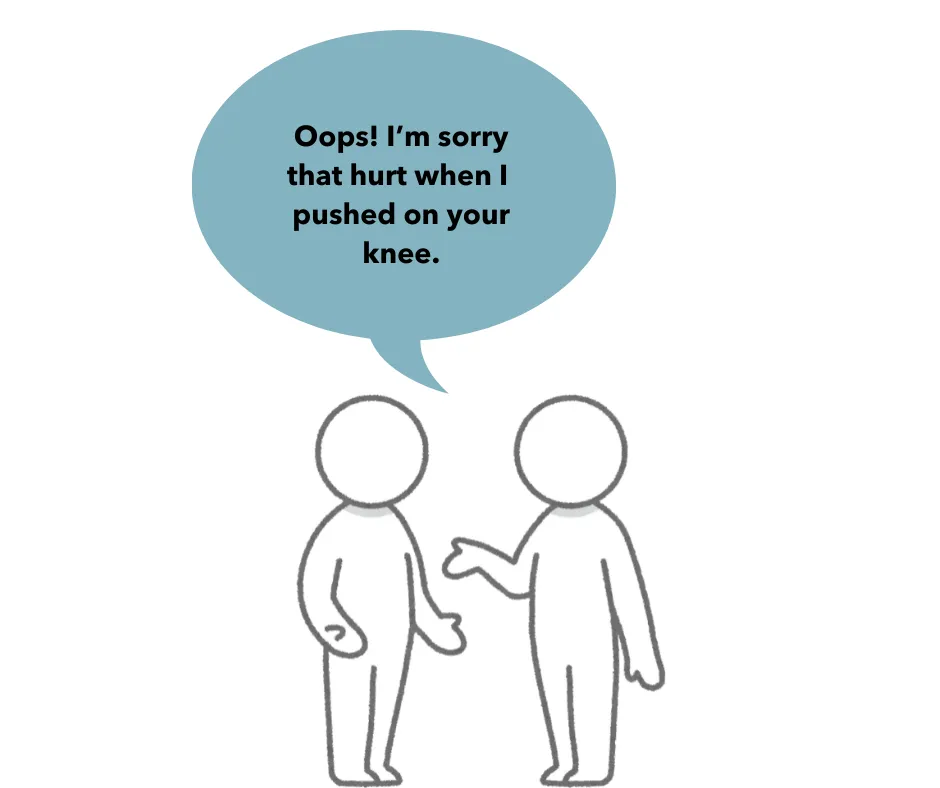
2. Something Large: it can be something with serious consequences like a pneumothorax or privacy breach which would require an apology and a disclosure of harm. In 2023 the Health Quality Council of Alberta (HQCA) published a helpful document on Disclosure of Harm.
3. Something Unknown: you may have said something, or a colleague may have caused an issue that went unnoticed by you. You may pick up on verbal or non-verbal cues that your client is upset. If you notice these things, it is best to ask the client what is bothering them and if they want to talk about it.
Step 2: Evaluate the Incident

* Risk to You: Be aware of any reporting requirements you need to fulfill or other actions to address potential risks and liabilities. You should also take care of your own health and well-being following a patient safety incident.
Policies and procedures could include reporting near misses, annual reviews of privacy policies and safeguards, or identifying action items from past incidents.
If you do not know your organization’s policies or procedures about responding to incidents and managing risks or if they are not available, this is a significant issue. You need to address this with those in charge of the practice site. Failure to do so puts patient safety at risk.
The HQCA’s Disclosure of Harm document can help you build policies and procedures specific to your practice site if you do not have them in place.
Now that you have evaluated the incident, the risk associated with the incident and the policies and procedures in place you should now have a clear understanding of what happened and why. You are now in a position to take action.
Step 3: Consider the Client’s Perspective, the Role you Played, and the Role your Team Played

The Client’s Perspective: A good place to start would be trying to put yourself in your client’s shoes. If you were the client, would you find an apology and/or an explanation helpful? You may not agree with the client’s perspective but remember that the opinions, experiences, and memories of the patient are their opinions, experiences, and memories. For many clients, knowing that action was taken after review of the incident, and that you identified the issues that led to the incident can make the client feel better.2,3,4
The Role You Played: You are the one building a therapeutic relationship with your client and are the person responsible for their care. If the incident occurred during the provision of physiotherapy services, you bear the responsibility of communicating with the client.
The Role Your Team Played: Even if the incident occurred when someone else was providing physiotherapy services under your supervision or completing administrative tasks on your behalf, the client may look to you for answers. It is your responsibility if the actions of someone you supervise create a situation that requires an apology.
If you are going to apologize, the following should be considered as part of it.
- The words ‘I am sorry’ or ‘we are sorry’ should be included.
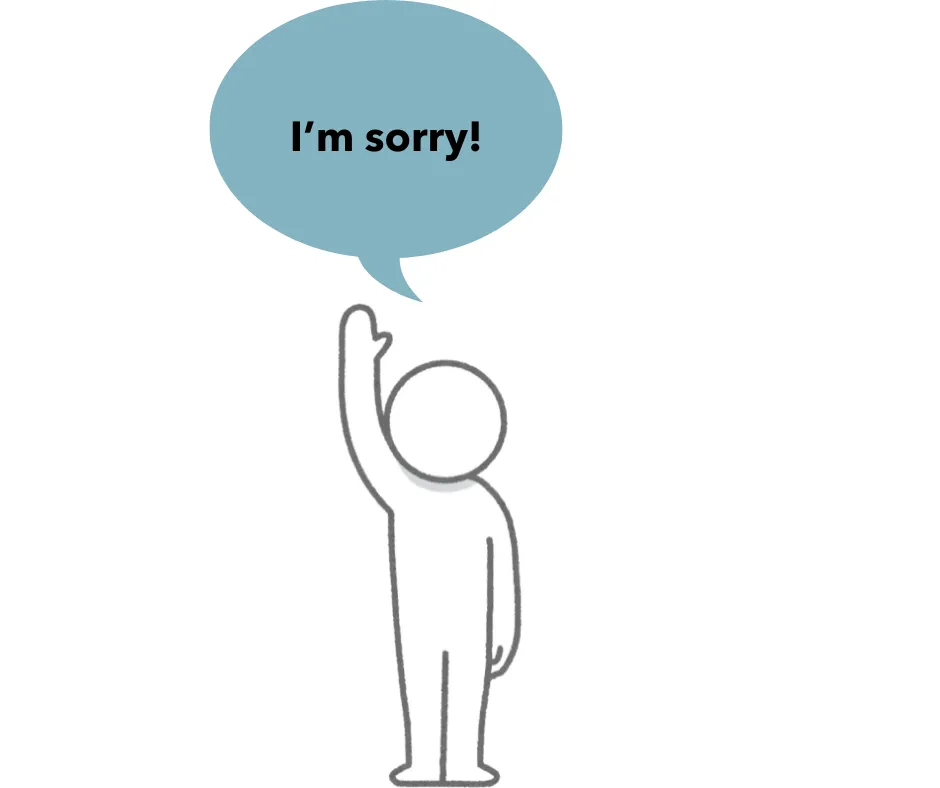
- If you were directly involved in the incident, or if you were responsible to supervise and assign activities to the people involved in the incident, you should be the one providing the apology.
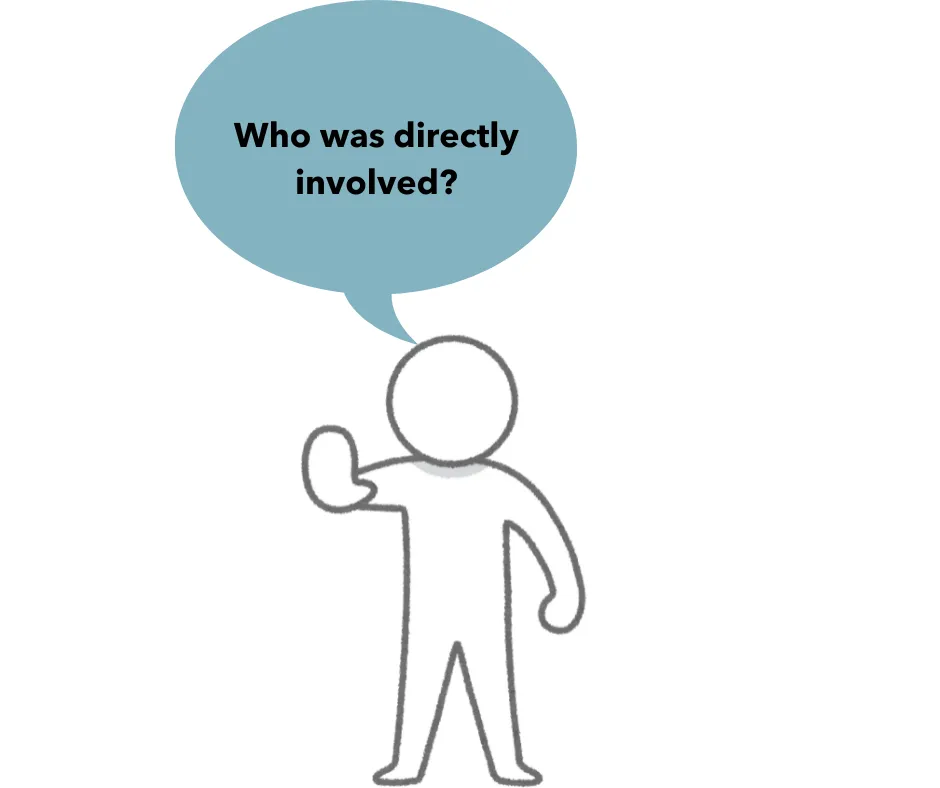
- The apology should be sincere. Body language, tone of voice, and the words used should all convey empathy and regret about what happened.
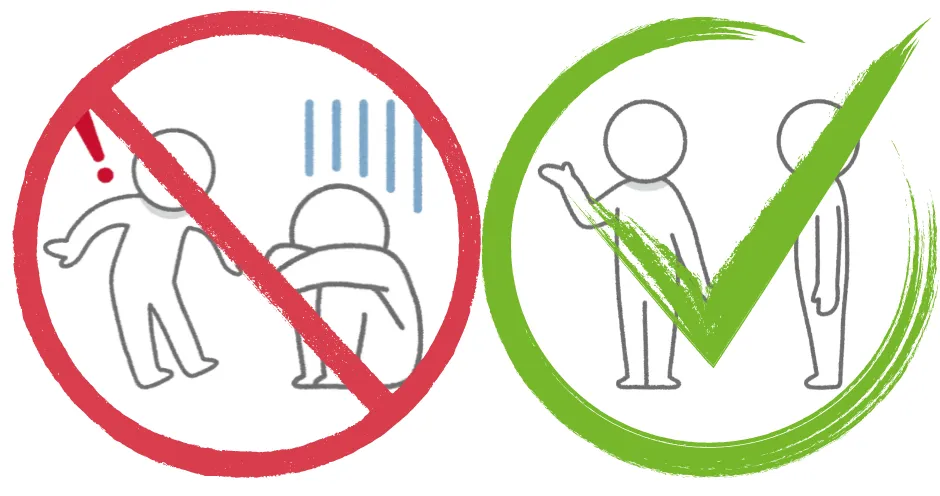
- Outline exactly what occurred and what is being apologized for. Include actions and next steps to address the incident.
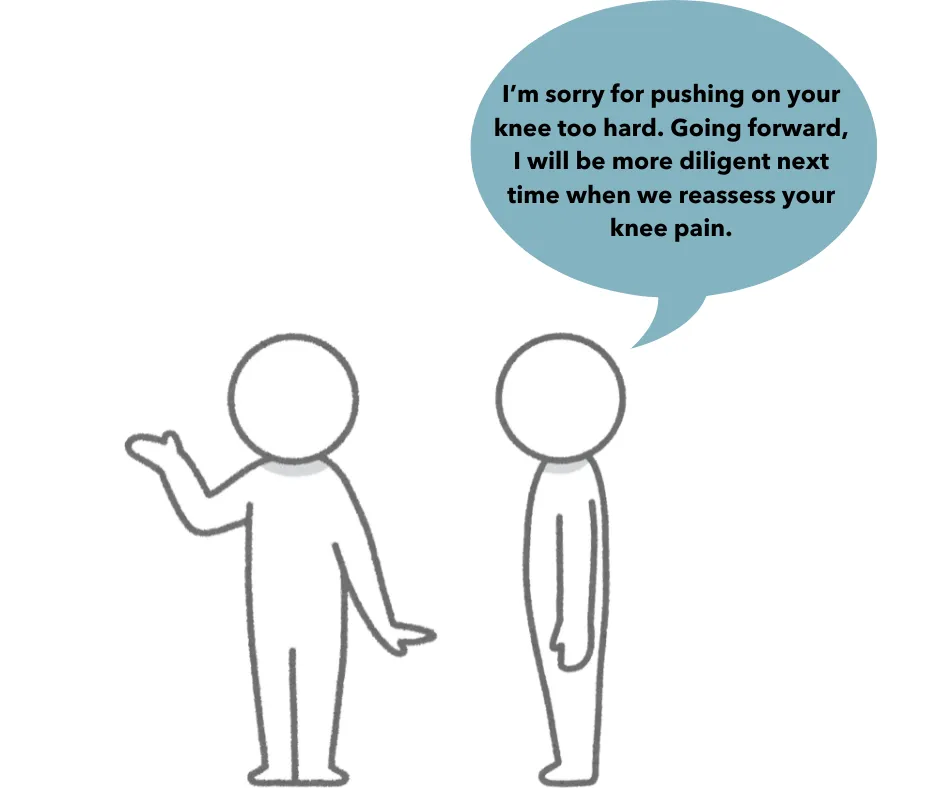
- Actively listen to the client and/or their family. Being heard is a key part of an apology. Listen to the feedback and concerns being brought up in these conversations.
- Following up is also a key part of an apology, especially if the incident was serious.

Step 5: Apologize
Have the conversation with the client and other parties that need to be involved as planned.
Listen to what they have to say and address their concerns as best you can.
It is also important to remember that you can make the most sincere and eloquent apology, but it still doesn't guarantee that the receiver is open or able to accept an apology. There is nothing wrong with this but be prepared that this may occur.
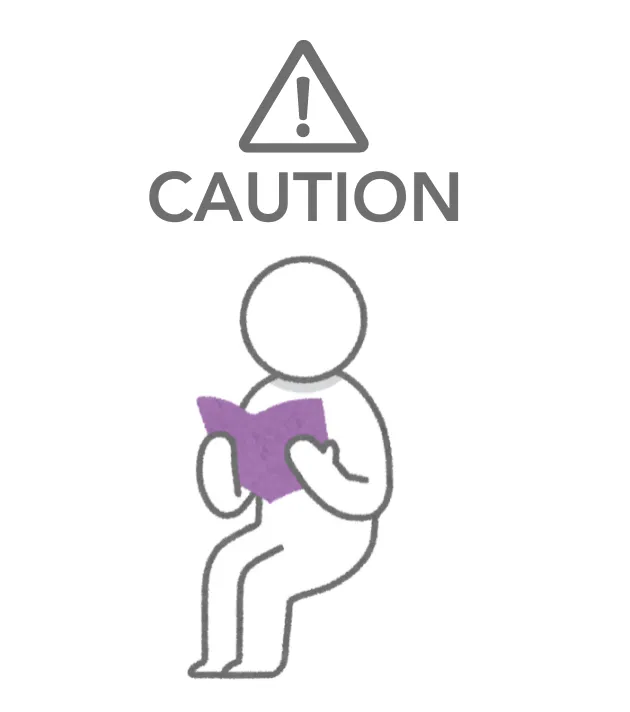
Avoid the Non-Apology
During the disclosure process as outlined in the HQCA document, sometimes making an apology may not feel quite right after a client incident and you may choose to use an expression of regret. An expression of regret would indicate that you are sad or disappointed in what occurred but are not offering an apology or saying the word sorry, for example, if you know an incident happened but were not directly involved. Regardless, an expression of regret should still be offered with sincerity and with empathy using verbal and non-verbal cues that let the client know that you care.
This should not be confused with an insincere non-apology. Non-apologies use words such as “I am sorry you feel this way” or “I am sorry but…” or “I guess I should apologize…”
Non-apologies can make the situation worse and create issues as clients will react to the words used and the non-verbal cues that come with them.
Step 6: Follow up if Needed
If you plan to follow up with the client, make sure that you do. Failure to do so can result in your apology feeling fake or insincere. Depending on the situation the follow-up can be a brief check-in or a more detailed debrief of what has happened since you last spoke.
Congratulations! You have completed your apology successfully. Review the checklist below to ensure full completion.
Checklist for Completion
- Identify the Issue
- Evaluate the Risks
- Evaluate the roles played
- Consider the client's perspective
- Consider the roles you and your team played
- Make a plan
- Apologize
- Follow up if required
Resources:
- I’M SORRY (Please Don’t Sue Me) by Brian Curial, LL.B. and Maria Chau, B.Sc., LL.B. Miller Thomson LLP, Edmonton https://www.millerthomson.com/assets/files/article_attachments/Please%20Don't%20Sue%20Me.pdf
- https://hqca.ca/wp-content/uploads/2023/10/HQCA-2023-harm-brochure-PROVIDER-F-web.pdf Accessed July 24th, 2024
- https://www.safetyandquality.gov.au/publications-and-resources/resource-library/australian-open-disclosure-framework-saying-sorry-guide-apologising-and-expressing-regret-during-open-disclosure Accessed July 24th, 2024
- https://www.cec.health.nsw.gov.au/Review-incidents/open-disclosure/apologising-and-saying-sorry Accessed July 24th, 2024




